PHILADELPHIA––Four days before the midterm elections, a large crowd assembled in Philadelphia to discuss the power of craft as a vehicle for activism. The symposium topic Making a Difference: Social and Political Activism in Craft is also the focus of our current exhibition at The Clay Studio, as well as the 2018 theme of CraftNOW Philadelphia. The symposium lineup this year included stellar artists, scholars, and curators such as Helen Drutt, Glenn Adamson, Roberto Lugo, and more. The panel on Activism in Clay included Ann Agee, Syd Carpenter, and Ayumi Horie. The mood was determined and optimistic as we shared methods and inspirations for making and highlighting activist artwork.
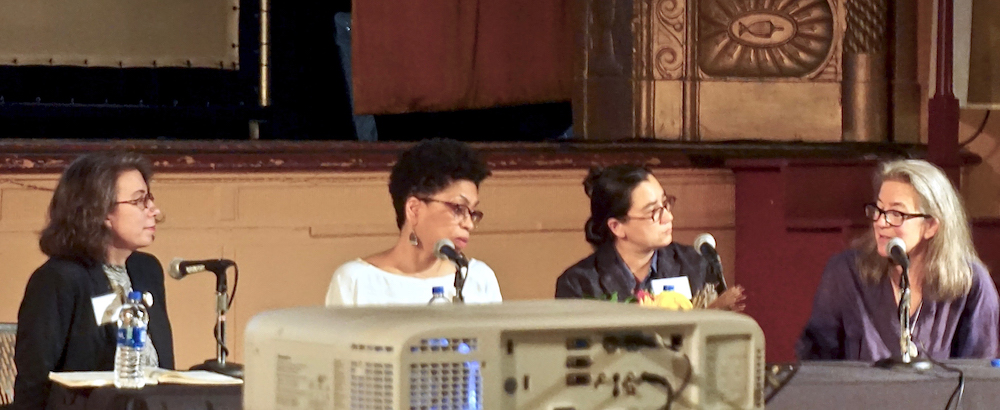
TCS Panel: (Left to right) Jennifer Zwilling, Syd Carpenter, Ayumi Horie and Ann Agee
Agee, Carpenter, and Horie, three of the 13 artists whose work is on display in The Clay Studio’s exhibition Making a Difference: Social and Political Activism in Clay (September 29 – November 18, 2018) joined me to discuss when, how, and why each of them connected activism to their artistic practice. We had convened earlier to review the questions posed; it was the first time the four of us had met together and an immediate spark of kinship was ignited.

Ann Agee, Handwarmers (Grouping 2), 2018
Ann Agee discussed her progression from painting to ceramics during graduate school; the move was not encouraged by her teachers or her classmates. There was a sense that she had intentionally turned to something that was not as highly valued. Agee found value in that which was crafted and embodied hard work. Historical decorative arts objects and the social information they contain inspire her to create her own versions, that often celebrate every day modern life. Her work in Making a Difference consists of a group of ceramic shoes fashioned after shoe-shaped hand warmers Agee saw at a museum in Florence. The installation of a multitude of various shoes turns each one into a votive, honoring the historical and contemporary women, and the entire piece represents the work that remains to achieve equality within our lingering patriarchy.
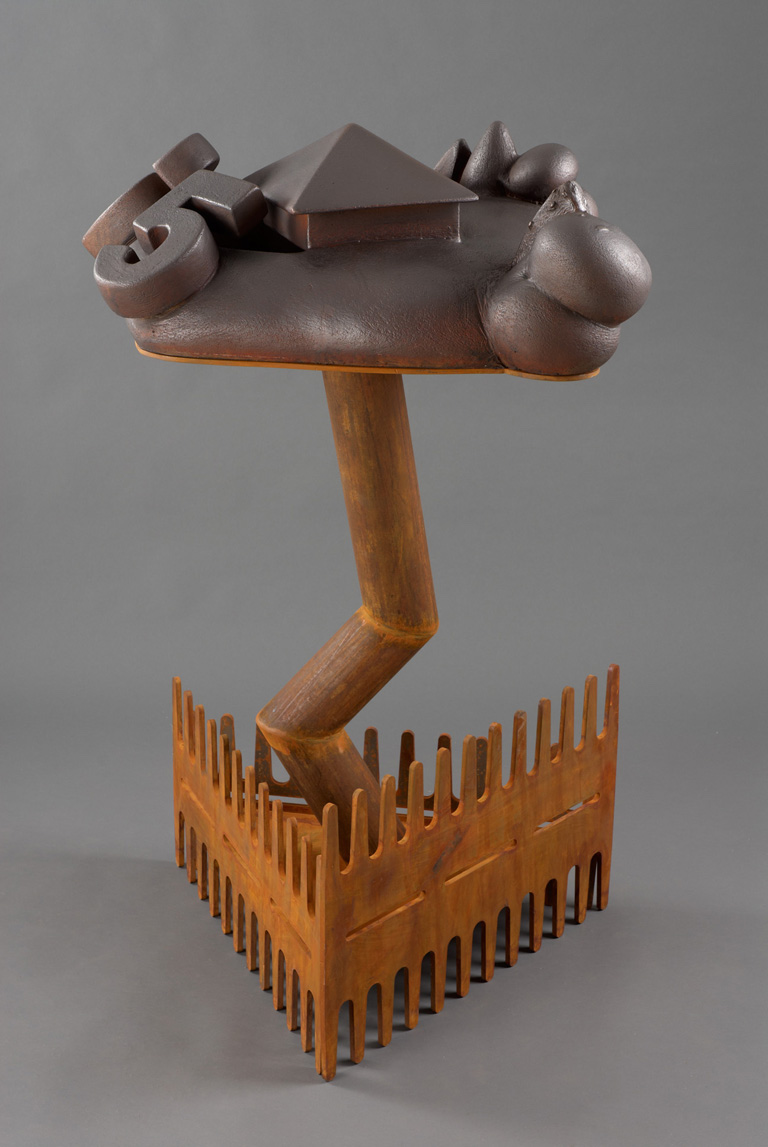
Syd Carpenter, Per Fryar, 2015, Clay, steel, graphite. 46 inches
Syd Carpenter’s comments were especially poignant as she discussed her graduate studies in the 1970s at Tyler School of Art as one of her teachers, Robert Winokur, was in the audience. While praising Winokur’s method of leading the students, she also acknowledged that she wasn’t exposed to other black artists or many women artists as part of the curriculum. She had to research and seek out that information on her own. Although her work was not visually political during the first stage of her career, Carpenter noted that just being a black woman artist felt like an act of resistance. The work was therefore infused with an activist spirit. Her comments were personal and powerful, and the audience, which ranged from 20-something art students to octogenarians, was riveted.
Over the last twenty years Carpenter has explored a more directly activist theme: the survival of black-owned farms in the South. She has visited many farms that have persisted with black ownership even through extremely difficult circumstances, most often outright racially motivated tactics to intervene. Her ceramic portraits of the farms entwine the owners with their land. They are celebrations of these survivals, as well as reminders of how many formerly black-owned farms did not survive the awful conditions working against them.
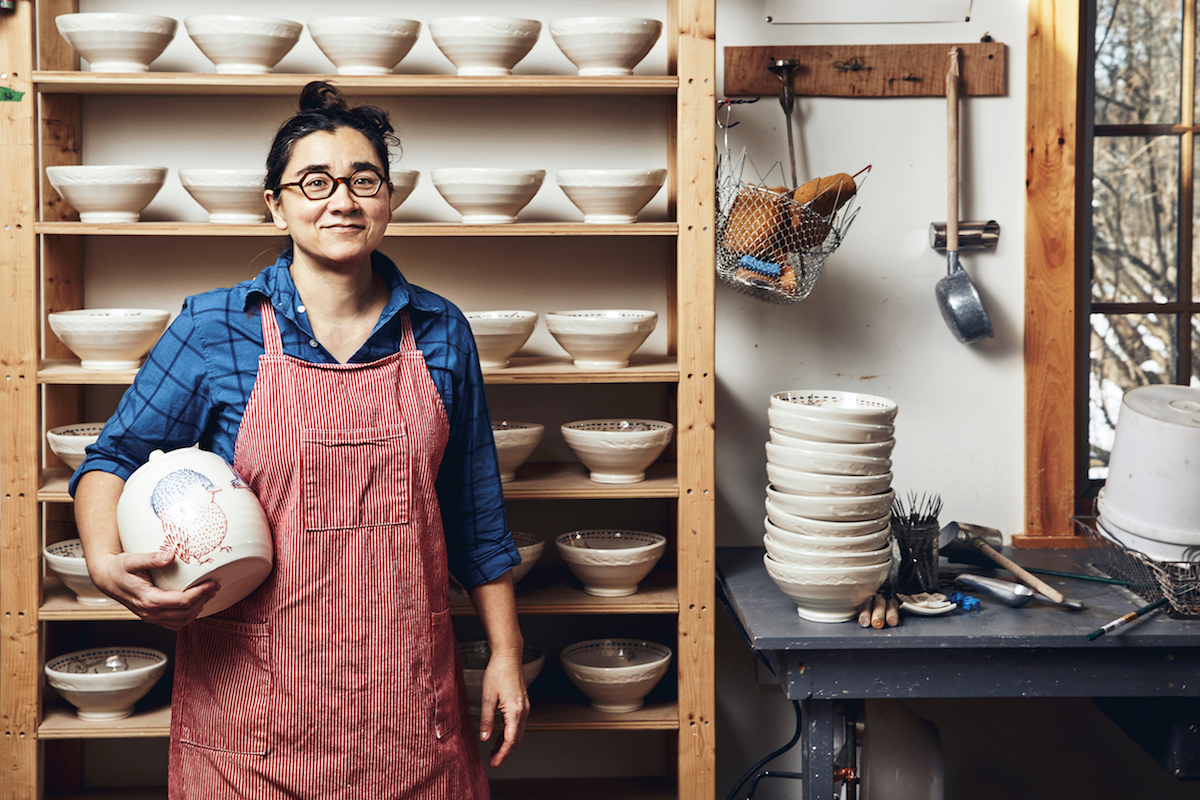
Ayumi Horie. Photo: Michael D. Wilson
Ayumi Horie recounted her early career in graphic design and the subsequent conflicts she felt in that field around the same time she got serious about ceramics classes. She had a romantic idea about the life of a potter, which included an integral aspect of social activism. During the panel Horie highlighted The Portland Brick Project, The Democratic Cup, a collaborative project with Nick Moen and others, and Pots in Action, an Instagram feed highlighting underrepresented ceramic artists from around the world. Pots in Action has become a key source of information for those represented to be empowered, young artists to be encouraged, and as a research tool for those of us studying ceramic art.
Resistance against the expectations and false societal limits set for these three trail-blazing artists was one of the common threads of the panel. We received great feedback from the audience, and the four of us then continued the conversation through email as the elections unfurled a few days later.
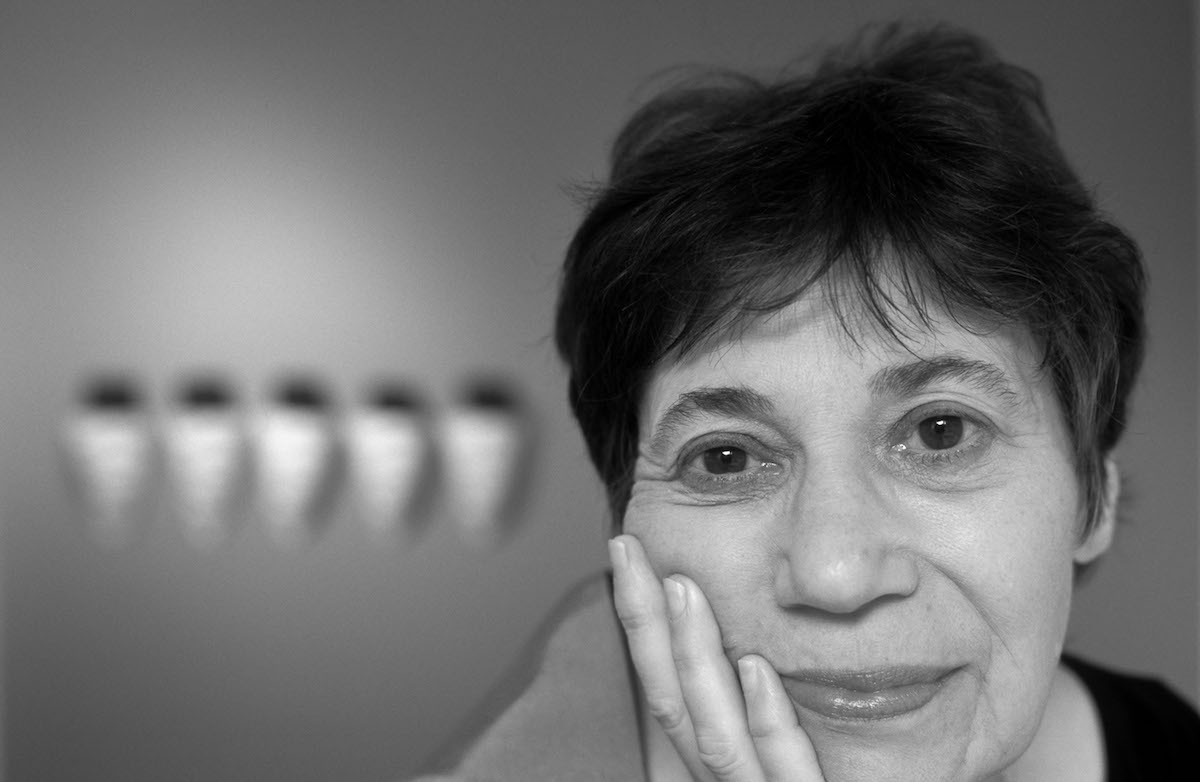
Paula Winokur
Helen Drutt gave a moving tribute to her friend Paula Winokur, another artist whose work is featured in The Clay Studio’s exhibition. The ceramic field, and especially those of us in Philadelphia, universally love and admire Paula, who passed away in February. We lost her too soon, when she was still in the midst of making powerful work focused on climate change and the loss of the world’s icebergs. Paula brought out the beauty and the power of porcelain in a unique way that echoed her own strength. Drutt’s eloquence captured Paula’s essence and brought the room catharsis in the face of her loss.
A fifth artist with work in The Clay Studio’s exhibition who spoke that day was Roberto Lugo. He delivered a powerful final keynote talk. He began with a spoken word performance, bringing the audience to full attention, and continued to rivet us with incredibly intense aspects of his personal history leading up to discovering the power of clay. Lugo has famously said that pottery saved his life. Nothing I can write here can do justice to his history, but I know I was not alone in feeling an upsurge of hope as he talked about the power he found through the process of making with clay, how he uses his art to bring attention to social ills, and to create hope where he knows it is needed most.
This year The Clay Studio’s exhibition Making a Difference, inspired CraftNOW to adopt the same as the 2018 theme. By unifying the programming over a dozen organizations, CraftNOW raises the profile of craft art in Philadelphia, and amplifies the chosen theme to achieve the greatest impact possible. It was a timely topic to address within this tumultuous political atmosphere, especially with the programming happening just before the midterm elections. We asked organizations to consider how the artwork they exhibit makes a difference in the world. The Symposium allowed us to come together and feel buoyed by the presence of others in the craft art field working toward positive change through craft. Many methods were highlighted, such as teaching art to kids in under-resourced neighborhoods, making cups that encourage civil discourse, or just by being an artist of color, blazing a trail for the next generation. The Clay Studio is proud of this important exhibition and encourages you to visit us before the show closes on Sunday, November 18th, or go to our website to view the artworks and read the words of each participating artist.
Jennifer Zwilling, Curator of Artistic Programs, The Clay Studio
Special thanks to Leila Cartier, Executive Director, CraftNOW Philadelphia.
This post is a sponsored post. To learn how to sponsor a post on Cfile.org, click here.
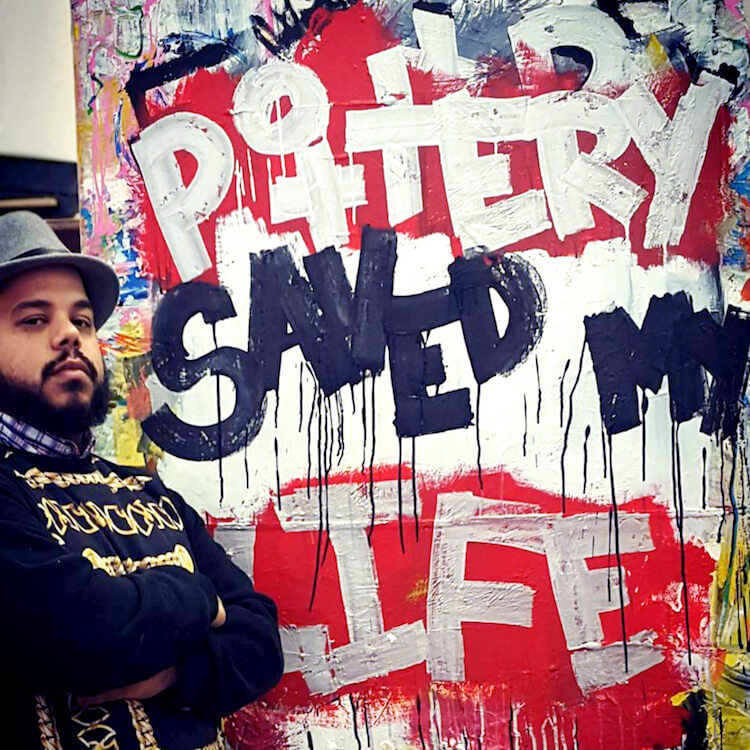
Add your valued opinion to this post.